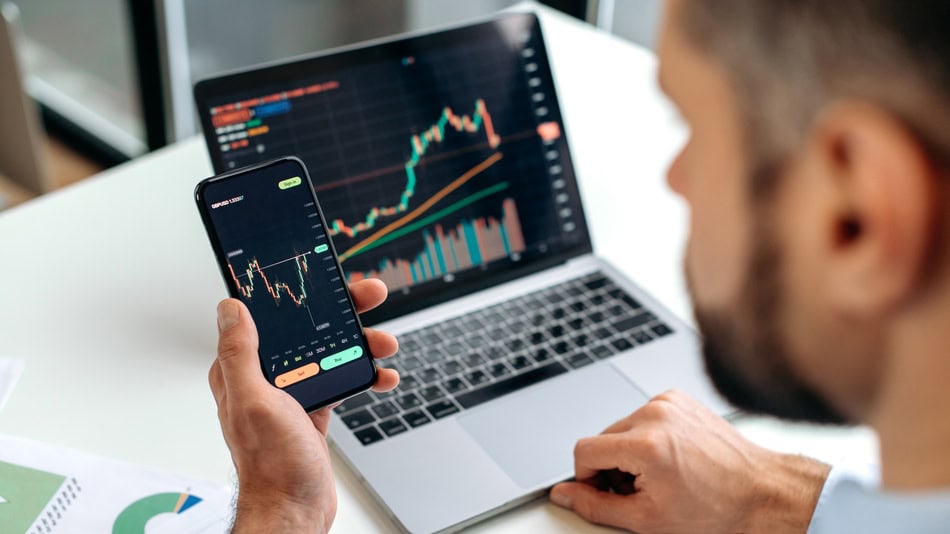
Learning how to trade futures can be both exciting and overwhelming for new traders. With the S&P 500 being one of the most widely followed indexes in the world, its futures contracts are often the first stop for those entering the market. To succeed, beginners must understand how to read the S&P 500 futures barchart and practice execution through Paper Trading before risking real capital. By combining chart analysis with simulated trading, aspiring traders can build confidence, reduce mistakes, and develop strategies in a risk-free environment.
What Are S&P 500 Futures?
S&P 500 futures are standardized contracts that allow traders to speculate on or hedge against the future performance of the S&P 500 index. Traded on the CME Group, these contracts are highly liquid, offering tight spreads and significant leverage. Unlike buying stocks, futures require only margin deposits, which amplifies both profits and losses.
For beginners, these futures contracts are an excellent entry point into the world of derivatives because they track a broad market index rather than individual companies. To trade effectively, however, one must learn how to interpret price patterns on charts.
Understanding the S&P 500 Futures Barchart
A S&P 500 futures barchart is a graphical representation of price action over time. Each bar shows four critical data points: the opening price, the highest price, the lowest price, and the closing price within a specific time frame. Unlike line charts, which only show closing prices, bar charts provide a fuller picture of market sentiment and volatility.
Key insights from bar charts include:
- Long bars: Indicate high volatility, often signaling strong momentum or uncertainty.
- Short bars: Suggest consolidation, where buyers and sellers are balanced.
- Position of closing price: A close near the high can indicate bullish pressure, while a close near the low suggests bearish sentiment.
By analyzing these patterns, traders can anticipate potential breakouts, reversals, or trends in S&P 500 futures.
Common Bar Chart Patterns for Beginners
Understanding basic chart patterns is essential when analyzing the S&P 500 futures barchart. Some of the most common include:
- Inside Bars: Where the entire bar falls within the range of the previous bar, signaling consolidation before a breakout.
- Outside Bars: When the bar’s high is above and its low is below the prior bar, often indicating increased volatility and possible trend reversals.
- Trend Bars: Bars with a strong close near the high (bullish) or near the low (bearish), signaling momentum in one direction.
- Double Tops and Bottoms: Formations where prices test levels twice, suggesting potential reversals.
Recognizing these chart patterns on S&P 500 futures contracts allows beginners to predict possible price action and plan entries and exits more effectively.
The Role of Paper Trading
While chart reading is crucial, practicing execution is equally important. This is where Paper Trading comes in. Paper trading refers to simulated trading on platforms that mimic real market conditions without using actual money.
For beginners, paper trading offers several benefits:
- Risk-Free Learning: Mistakes don’t cost money, making it ideal for experimentation.
- Strategy Testing: Traders can try different methods, such as breakout or trend-following strategies, on the S&P 500 futures barchart.
- Building Confidence: Simulated trading helps new traders become comfortable with placing orders, setting stop-losses, and managing positions.
- Emotional Control: Beginners can practice decision-making without the pressure of real gains or losses, preparing them for live markets.
Combining Barchart Analysis with Paper Trading
The most effective way for beginners to grow is by combining bar chart analysis with paper trading. Here’s a step-by-step approach:
- Identify Patterns: Use the S&P 500 futures barchart to spot inside bars, trend bars, or consolidation zones.
- Create a Hypothesis: Decide whether the pattern suggests a breakout, reversal, or continuation.
- Enter a Simulated Trade: Place buy or sell orders in a paper trading account based on your analysis.
- Set Risk Parameters: Apply stop-losses and profit targets to practice risk management.
- Review Results: Analyze outcomes to see if your interpretation of the chart was accurate.
Repeating this process builds both technical skills and trading discipline.
Avoiding Common Beginner Mistakes
Even with paper trading, beginners often fall into traps. Some common mistakes include:
- Overtrading: Taking too many trades without a clear plan.
- Ignoring Risk Management: Failing to set stop-losses during practice makes it harder to apply them in real markets.
- Chasing Patterns: Forcing trades by seeing patterns that don’t exist on the S&P 500 futures barchart.
- Skipping Review: Not analyzing why a paper trade succeeded or failed reduces the learning experience.
By avoiding these errors, beginners can make paper trading a powerful step toward live trading readiness.
Why S&P 500 Futures Are Ideal for Beginners
The S&P 500 is one of the most followed indexes worldwide, making its futures contracts highly liquid and relatively predictable compared to niche markets. This liquidity ensures smooth trade execution and minimal slippage, which is especially important for beginners.
The combination of an easy-to-understand benchmark and highly active futures market makes analyzing the S&P 500 futures barchart a practical way to learn the foundations of trading. When coupled with paper trading, it provides a low-risk path to developing essential trading skills.
Conclusion
For aspiring traders, mastering the basics of the S&P 500 futures barchart and practicing with Paper Trading is an essential foundation for long-term success. Bar charts provide deeper insights into market dynamics than simple line charts, while paper trading allows beginners to apply this knowledge without financial risk.
By combining technical analysis with simulated practice, new traders can develop strategies, build confidence, and prepare themselves for the challenges of live futures trading. In a market as dynamic as the S&P 500, this preparation can mean the difference between failure and a sustainable trading career.